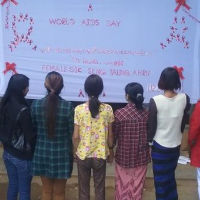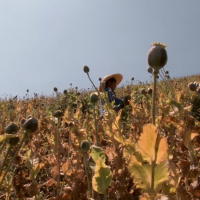A day in the life of a woman opium poppy farmer in Myanmar A commentary by TNI
Regions
There is genuine hope that by sharing her story as a woman who grows opium, Nang Kham could help encourage other women farmers to speak out, and encourage the wider community to realise the collective benefits of gender equality.
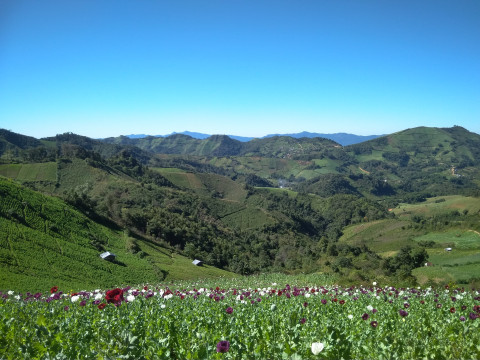
Nang Kham (a pseudonym) is 32 years old and lives with her husband and two children in a mountainous village in southern Shan State, Myanmar. Like many women around the world, she bears a disproportionate share of household work. She is also one of the tens of thousands of women who cultivate opium as a means of survival in Myanmar. She lives in a high-altitude area, where opium fields stretch out as far as the eye can see.
Cultivation for household needs such as traditional medicines has been common in Nang Kham's village for some time, but larger scale cultivation is a relatively new phenomenon. The violence and insecurity that followed the conflict in the late 1990s forced Nang Kham and her fellow villagers to flee.1 When they returned years later they discovered that all their crops and domesticated animals had disappeared. The only viable cash crop at the time was opium. It grows relatively quickly, is low in volume and high in value and traders come to the village so there is no need to travel to the nearby market. And as the roads are in bad shape, and conflict sporadically flares up, opium was and is a life saver cash crop.
Nang Kham earns more than 70 percent of her annual household income with one season of opium cultivation and harvesting per year. Most of this income is spent on food, healthcare, and education. She also grows a small amount of food for household consumption, as well as tea and coffee to be sold to local cooperatives.
Daily routine
Nang Kham’s day begins as soon as the monastery bell rings at four in the morning. She starts by building a fire and cooking breakfast. Afterwards, she wakes up her husband to help her collect more firewood from the forest. They return at six or seven in the morning and it’s time for Nang Kham to serve breakfast to the family.
Next she returns to the kitchen to prepare food for her eldest child's school lunch and so she and her husband can eat in their opium field. Her younger child is too young to go to school so he joins them for their daily trip to the opium field—an hour's walk from home.
In the poppy field, Nang Kham and her husband share more or less the same tasks, from preparing the land, planting, fertilising, to weeding and harvesting. They work from around eight or nine in the morning until five in the afternoon. During the weeding period they work longer hours.
Back home in the evening, Nang Kham is once again in charge of cooking evening dinner, washing, cleaning and other tasks that keep her busy until bedtime. On top of all this, like women around the world, she bears a disproportionate share of the often-underestimated responsibility of childcare.
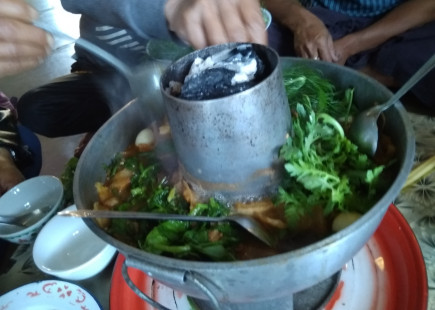
Women in opium production
Nang Kham was one of more than forty women growers who we spoke with as part of our research work in Myanmar, where approximately 190,000 households are said to be involved in opium cultivation, primarily in Shan and Kachin State. Prior to sharing their experiences with us, most respondents admitted that they had never spoken about the challenges they face as women growers.
Like Nang Kham, other women farmers bear a greater load of daily chores and responsibilities than their male counterparts. These women generally play a very small role in political and social matters, though they are equally skilled and knowledgeable of their work and community.
Some women growers, Nang Kham included, are in charge of keeping and managing their household incomes, although this does not automatically translate to more decision-making power for women in general. Most of our respondents pointed out that all decisions related to household spending are made collectively by both wife and husband, a dynamic made possible thanks to the additional income earned by growing opium.
Nevertheless, the illicit status of opium cultivation – along with its consequent policies like forced eradication and criminalisation – sometimes puts farmers and their families in precarious financial situations. When a harvest is lost due to either forced eradication or bad weather, farmers need to borrow money and/or to work as daily wage labourers at other farms.
These challenges can go beyond the issue of money, as socioeconomic vulnerability is worsened by the lack of essential services available in their communities. Only one nurse provides basic healthcare in their village, and she is also looking after twenty four other nearby villages. The closest hospital is an hour away by scooter, which can easily turn into five hours in the rainy season.
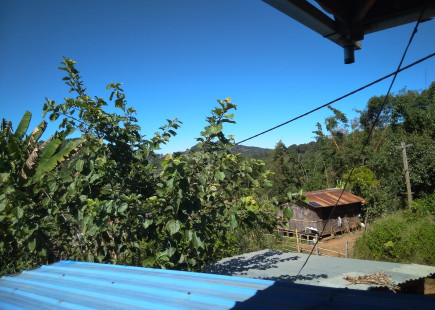
Nang Kham worries about her children’s future, “what about families who cannot afford to finance (higher) education for their children? How can we find institutions who can help provide funds for this?” Her questions resonated with other farmers around her.
Limited access to land titling is another issue that some women face. In some parts of the country, only their husbands’ names are written on land certificates. However, this is not the case in Nang Kham’s traditionally Shan village: In Shan culture the family decides the ownership and inheritance of land.
The subtle nature of gender inequality
In comparison with other parts of the world, such as Latin America, gender-based discrimination that affects women – and more specifically women in illicit cultivation – may appear more subtle in Myanmar, and possibly also in the wider Southeast Asia region.
As argued by thinkers like Tharapi Than, the impact of gender inequality in Myanmar is magnified for women who belong to certain ethnic minority groups, for women in rural areas and/or in conflict and poverty, and for women who take part in illegal activities.
This multi-layered form of marginalisation is exacerbated by socioeconomic inequality between the rich and poor as well as between those in urban and rural areas. Such inequality further alienates disadvantaged women, for instance by depriving them of basic education, and prevents them from fighting for their rights – all while the myth that there is no fight to be fought hangs in the air.
Gender equality benefits women, men, and the wider society
When asked about what they wished to see change in their lives in the future, Nang Kham and many other respondents did not mention anything gender-specific. “We want to see better roads and electricity, which we don’t have at the moment,” said one woman. Nang Kham answered, “we need more livelihoods or income sources and better access to education and healthcare.”
These sentiments were shared many times during our conversations with women farmers. Several women who have taken part in the Myanmar Opium Farmers’ Forum2 (MOFF) meetings, felt that having more opportunities to speak publicly either at village or community meetings has in fact enabled them to strengthen their capacities. They developed skills, which helped to defend their interests and eventually enhanced the well-being of their families and the wider community.
Recent initiatives like the MOFF aim to support changes in the lives of opium farmers for the better, while contributing to the refinement of the country’s drug-related policies in general. Yet they remain incomplete without the adequate participation of women, whose tireless efforts and productive insights deserve real attention and acknowledgment. The need for further participation of women in society has become even more important today, given the new set of challenges faced by farmers due to COVID-19 related impacts and restrictions. In the last three months alone, opium prices have dropped by almost fifty percent.
Nang Kham’s story represents just a small part of what is experienced by tens of thousands in Myanmar who have long endured harsh policies and exclusion because of their involvement in the illicit drug market. Regardless, there is genuine hope that by sharing her story, Nang Kham could help encourage other women to speak out and encourage the wider community to realise the collective benefits of gender equality.
Notes:
1 To learn more about this conflict and its implications, see: Amnesty International. Myanmar: Atrocities in the Shan State https://www.amnesty.org/download/Documents/152000/asa160051998en.pdf and Statement by Shan community groups, (June 2020). Still waiting for justice: remembering the Hsai Khao and Tad Fa Ho massacres. https://www.shanhumanrights.org/eng/index.php/392-still-waiting-for-justice-remembering-the-hsai-khao-and-tad-fa-ho-massacres
2 The Myanmar Opium Farmers’ Forum was formed in 2013 to protect the rights of farmers and help them have meaningful involvement in drug policy design and alternative livelihood development. Read more: https://www.tni.org/en/profile/myanmar-opium-farmers-forum-moff

